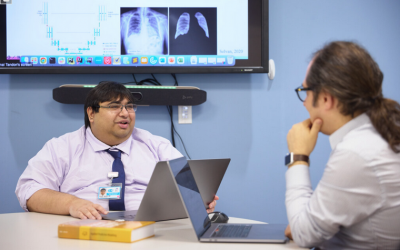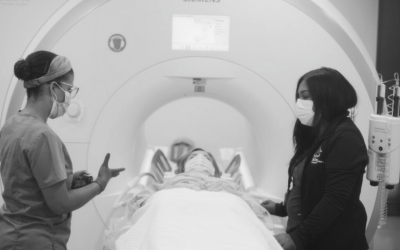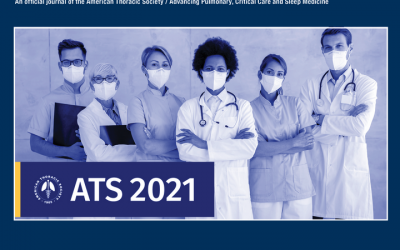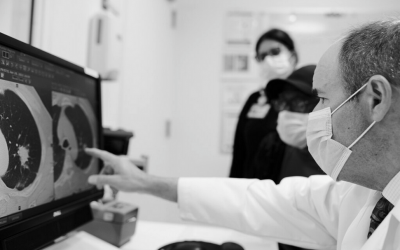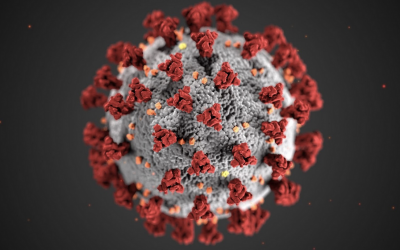Blog
Our work has been presented at national conferences and published in peer-reviewed journals. We are also frequently posting about our new projects.

Impact of a Real-Time Ventilator Management Dashboard with Alerts: Sustained Hospital-Wide Improvement in Lung Protective Ventilation
The following is a summary of a presentation conducted by our team for the American Thoracic Society 2022 International Conference, which took place May 13-18, 2022. For more information, visit https://www.atsjournals.org/doi/abs/10.1164/ajrccm-conference.2022.205.1_MeetingAbstracts.A2380. Impact of a Real-Time Ventilator Management Dashboard with Alerts: Sustained Hospital-Wide Improvement in Lung Protective Ventilation P. Tandon1, K. Nguyen2, G. Raut2, S. Ranginwala3, G. Oldenberg3, K. S....
CDI Alert System for Metastatic Disease
The Metastatic streaming engine was developed to identify inpatient encounters with high risk of metastatic disease (cancer that spreads from where it started to a distant part of the body) and optimize the capture rate. It was deployed at The Mount Sinai Hospital on April 2022. Clinical Documentation Integrity (CDI) Core of every patient encounter is clinical documentation accurately reflecting the patient’s disease burden and scope of services provided. Clinical documentation must be : Clear...
Fusion of Chest Radiographs and Electronic Medical Records using Deep Learning to Predict Intubation among Hospitalized Patients with COVID-19
The following is a summary of a presentation conducted by our team for the AMIA 2022 Informatics Summit which took place on March 21-24, 2022. For more information, visit https://s4.goeshow.com/amia/summit/2022/schedule_at_a_glance.cfm?session_key=0A46ED0B-9129-113F-C3E4-B3A7CA14E915&session_date=Wednesday,%20Mar%2023,%202022. Fusion of Chest Radiographs and Electronic Medical Records using Deep Learning to Predict Intubation among Hospitalized Patients with COVID-19 Wednesday, Mar...
Strategies for Use of Training, Mentoring, and Sponsoring for Increasing Women in Biostatistics and Data Science Workforce
The following is a summary of a conference presentation conducted by our team at the Women in Statistics and Data Science Conference, which took place October 6-8, 2021. More information can be found at https://ww2.amstat.org/meetings/wsds/2021/onlineprogram/AbstractDetails.cfm?AbstractID=309886. Strategies for Use of Training, Mentoring, and Sponsoring for Increasing Women in Biostatistics and Data Science Workforce: Machine Learning-Based Predictive Models for Assisting with COVID-19 Crisis...
Deployment, Adoption, and Clinical Impact of a Real-Time Ventilator Management Dashboard
The following is a summary of a thematic poster presentation conducted by our team for the American Thoracic Society 2021 International Conference, which took place May 14-19, 2021. For more information, visit https://www.atsjournals.org/doi/abs/10.1164/ajrccm-conference.2021.203.1_MeetingAbstracts.A2815. Deployment, Adoption, and Clinical Impact of a Real-Time Ventilator Management Dashboard P. Tandon1, K. Nguyen2, M. Rajendran2, K. S. Mathews3, M. Crow2, R. Freeman2, P. Timsina2, C. A....
Predicting Readiness to Liberate from Mechanical Ventilation Using Machine Learning: Development and Retrospective Validation
The following is a summary of a thematic poster presentation conducted by our team for the American Thoracic Society 2021 International Conference, which took place May 14-19, 2021. For more information, visit https://www.atsjournals.org/doi/abs/10.1164/ajrccm-conference.2021.203.1_MeetingAbstracts.A2757. Predicting Readiness to Liberate from Mechanical Ventilation Using Machine Learning: Development and Retrospective Validation P. Tandon1, F. Cheng2, S. N. Cheetirala2, P. Parchure2, M....
Oncology Prognosis Tool
The Oncology Prognosis Tool is a classifier used to determine the eligibility of patients for serious illness conversation. It was deployed at the Mount Sinai Oncology Outpatient unit in March 2021 and Inpatient unit in August 2022. Challenges Majority of patients(~ 80%) with advanced cancer want to stay informed about Prognosis 1 The most common prognostic approach is Clinician Prediction of Survival (CPS) 1 Clinicians intuition is often said to be optimistically biased2 which may result in...
Patient Experience Project
The objective of the Patient Experience project is to predict patients who are most likely to report a sub-optimal inpatient experience in order to initiate service recovery, or other engagement strategies of the patient experience team, prior to discharge. The expectation is that this will increase overall patient satisfaction with their Mount Sinai hospital experience, as measured by the HCAHPS patient experience scores. This in turn would positively impact the MSHS reputation and increase...
Development and validation of a machine learning-based prediction model for near-term in-hospital mortality among patients with COVID-19
This paper was published in BMJ Supportive and Palliative Care 2022;12:e424-e431. Parchure P, Joshi H, Dharmarajan K, et al. Development and validation of a machine learning-based prediction model for near-term in-hospital mortality among patients with COVID-19. BMJ Supportive & Palliative Care 2022;12:e424-e431. Abstract Objectives To develop and validate a model for prediction of near-term in-hospital mortality among patients with COVID-19 by application of a machine learning (ML)...

